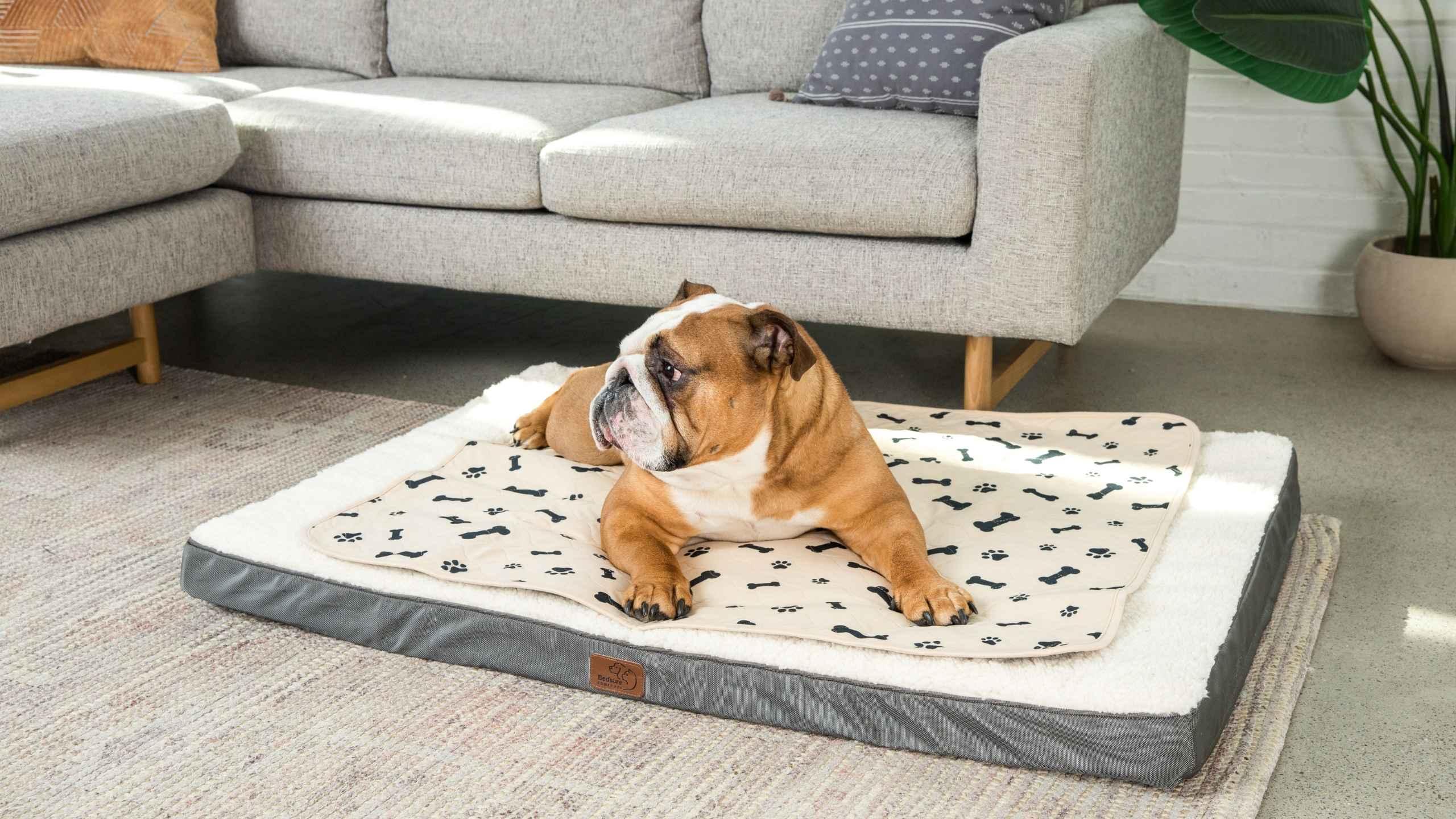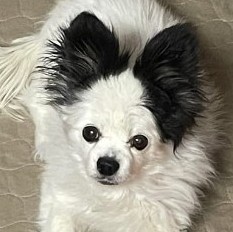Your Cart is Empty
Get Up To 35% OFF & Free Delivery
Get Up To 35% OFF & Free Delivery
Get Up To 35% OFF & Free Delivery

Ever Leaving a puppy alone for the first time can feel like dropping our child off at their first day of school; it can be stressful and upsetting for both dog and owner. When our dogs are puppies we get used to spending all our time with them, giving them around the clock care and all of our attention.
Unfortunately we can’t stay at home with them forever, and there will come a time where they will have to learn to be on their own for periods of time.
Knowing how to train your puppy in the most stress-free way will make the whole process easier, and so we have compiled a short guide on how to train your dog to stay home alone. Whether you have a young pup or a nervous adult dog, we hope to have the answers to all your burning questions about how to make this transition as easy as possible.
Without further ado, let’s get going!
The most important thing to remember when you train a dog to stay home alone for the first time is that dogs don’t come with a built-in coping strategy for being alone. They are pack animals, naturally sociable and thrive through the company of others, particularly humans who will play and cuddle with them.
This means that alone time can be particularly anxiety-inducing at first, as they are not used to the feeling and haven’t yet learnt that you will always come back. What we don’t want is for our puppies to associate being left alone with fear and danger, as this can develop into separation anxiety which can be a harder behavior to rewire.
Starting your dog with small lengths of alone time from a young age is the best way to get them familiar with the experience, and ro avoid them having issues with this as they get older. With this kind of training it is always advised to build the length of time up slowly, doing little and often so that your dog gets used to the experience of being on their own.
Then there is the matter of bladder control, something puppies don’t always have much of! When they are very little, around two-three months, they can only hold their pee for 1-2 hours at a time, making long lengths of time on their own impossible without puddles. As they get older, their bladder control starts to align with their age. 4 month old puppies can usually hold it for about 4 hours, 5 months for 5 hours, and so on - and by the time puppies reach 6 months or older they should start to gain full bladder control, meaning they can usually be left for up to 6 hours without wetting themselves.
Planning to leave your dog alone for the first time? There are steps that we can take as pet parents to make this transition more comfortable for our fur babies:
Taking your puppy out for either a nice walk, sniff around the garden or even some good stimulating playtime in the living room before leaving them for any length of time can be an excellent way to tire them out. This can encourage them to rest or sleep while you are away, meaning they might not even notice that you’re gone!
This can also help alleviate boredom, as oftentimes young dogs can get easily bored and then start to act out as a result. This behavior can present as biting and chewing, crying or even going to the toilet, and this can make your dog develop negative connotations with being left alone.


Too much fussing, hugging or vocal cues when saying goodbye to your dog can trigger anxiety. When you leave your dog, don’t make it a big event; owners should remain calm and assertive, using an upbeat tone and maybe a quick pat goodbye - the key here is to normalize the behavior.
Similarly with greetings, your dog will be very excited to see you when you first get home, which can lead to jumping, crying or excitement peeing. Again, remain calm, do not pander to these behaviors and take your dog straight outside to use the toilet. After this you can give them love and rewards to confirm the good behavior.
Making sure that your dog is left with a selection of age-safe toys (to help keep them occupied and stimulated while you’re away) is a great way to stave off boredom behaviors. Not only can this help keep your little one busy and distracted, it is also a really healthy way of teaching your dog to entertain themselves and learn self-play and soothing.
Try and provide them with toys of all different sizes, shapes and textures to draw their attention. You may want to add some chewy toys in there, perhaps some age-safe balls for them to chase around, squeaky toys for stimulation and softer toys for comfort and security.


The last thing you want when leaving your dog for any period of time is for them to get hungry or thirsty. This can of course be uncomfortable, unsafe and could lead to a ‘lacking’ mindset, inducing fear that their basic needs may not be met.
Always leave your dog with an adequate food and water supply when you leave, as this will help to keep them fed and watered should you become delayed and can’t get back to them until later than intended. If your dog is on a time specific feeding schedule then it could be worth investing in a time-specific food dispenser to ensure they are getting the right portions at the right time.
If taken to the toilet before being left, your dog should be able to hold their pee for a certain amount of time. However it is important to prepare, as it’s possible that your dog might get caught short when you’re out, and so it’s vital to provide them with a place to pee indoors.
You may want to consider pee pads - with our very own premium reusable pads coming in handy! These super absorbent and durable pads offer a comfy place for your pups to do their business without the risk of leaks. The material is odor neutralizing and the pads are machine washable, so they can be used time and again, making them the perfect toilet training tool.


Another thing you can do if you are really nervous about leaving your puppy on their own is to invest in a puppy camera. Similarly to a baby monitor, these can be set up around the home and can help you to keep an eye on your pooch when they are home alone. This allows you the flexibility to monitor their behavior while you are away, or even when you’re in another room that they can’t reach, meaning you have a better understanding of what you may need to teach them or tweak in order to keep them happy when left alone.
It also means you can catch any incidents or emergencies that may occur as and when they happen; you will then know if you need to head home or let someone you trust go over and intervene.
Once you've got all of the above, it's time to begin the training.
Now, let’s take a closer look at the training steps to get your dog comfortable with being home alone.
Whether you choose to crate your dog or let them roam free, show them that their bed is a good place to be and encourage them to spend some time in their bed with you present, giving them lots of praise and positive attention.
You can then start moving away from your dog whilst remaining in the same room, getting them to stay where they are. The owner should move away slowly from the dog, using either a physical or verbal cue that the dog will associate with ‘sit and stay’ - treats and rewards help with this!


You can then build on this by making them stay in their bed while you exit the room or go to a different part of the house. If you intend to contain your dog to one part of the house, try shutting the door or gate to this section so they get used to being enclosed in the space.
Now you can try leaving the house. This should be practiced little and often, going out regularly for short periods of time will teach your dog that you always come back for them. Dogs are very receptive to repetition, and so the more you repeat this action, the quicker it will solidify this as normal behavior and help reduce stress or anxiety.
While doing this gradually is very effective, all dogs are different and so some may be more sensitive than others. Enhancing this training with special training toys, treats and maybe even dog-safe calming products like sprays or pheromone plug-ins can just add that extra incentive for your pup and help them feel safer in their own company.

Like with any training process, it can be a bit of trial and error before finding what works for you and your pup. It is also easy to fall into certain traps and habits when training your dog:

The first few times you leave your dog home alone, especially if they are a particularly young or anxious dog, they may be prone to barking or crying, as well as other behaviors like biting and scratching things they shouldn’t and excessive urination. Never punish them for this, as they are learning something new and their behavior is just communication.
Too much fuss when leaving gives your dog the impression that being left alone is something big and scary. Remain calm and brisk when saying goodbye to show your dog that it is normal behavior.
Our dogs cannot always go everywhere with us and so staying home sometimes will be a necessity. We may feel guilty about this, especially if our dog barks or cries, but it is for the best in the long run.
Training can be a long and frustrating task at times, but don’t rush it. Slow and steady wins the race and doing this gradually will ensure that the training behaviors are well solidified for your dog.

Trying to train a dog to stay alone will be a different experience for each dog and owner, and will heavily depend on the dog’s age, breed and temperament. Don’t be disheartened if it takes your dog a little longer than others, as proper training takes time and patience. You’ll get there!
See How Dog Owners Are Using These Leak-Free Potty Pads to Keep Their Homes Clean and Pups Happy
4.7 ⭐⭐⭐⭐⭐
Over 100,000 Dog Owners Saved Money With Potty Buddy™
The washable pee pads that absorb anything your dog throws at them, while keeping your floors and furniture stain-free.
✅ Super Absorbent and Leak-Proof
✅ Great for Potty Training
✅ Ideal for Puppies and Older Dogs
✅ Washable and Reusable For Years
✅ Save over $400/year by not buying disposables
-60 Day Money Back Guarantee-

⭐⭐⭐⭐⭐
-Diana D.
These pads are a life saver for my kitchen floor and bedroom carpet! Just ordered 2 more!




Follow Us On
Check Out Our Most Popular Content